Ointment Manufacturing Plant
1200000 INR/Unit
Product Details:
- Material Stainless Steel
- Capacity 1000000 Milliliter (ML)
- Control Mode Semi-Automatic
- Voltage 220 Volt (v)
- Power 100 Watt (w)
- Color Silver
- Click to view more
X
Ointment Manufacturing Plant Price
- 1200000 INR/Unit
- 1 Unit
Ointment Plant Specification
- Stainless Steel
- 220 Volt (v)
- Semi-Automatic
- 1000000 Milliliter (ML)
- 100 Watt (w)
- Silver
Ointment Manufacturing Plant Trade Information
- Telegraphic Transfer (T/T) Paypal Cheque Cash in Advance (CID) Cash Advance (CA)
- 1 Unit Per Day
- 1-8 Week
- Standard
- All India
Product Description
Clients can avail from us cost effective Ointment Manufacturing Plant. Our offered manufacturing plant is tremendously used to meet the requirement of pharmaceutical industry and used for the production of ointments. The manufacturing plant provided by us is manufactured using superior quality components under the guidance of our dexterous professionals and is tested by our quality analysts to ensure its functionality at clients end. Further, this plant is available in different technical specifications to meet the numerous needs of our clients.
Features of Ointment Plant:
- The industrial Ointment Manufacturing Plant incorporates several features. The common ones are listed below:
- Homogenous mixing: To ensure consistent and uniform blending of ingredients that are required to produce an ointment base.
- Heating and Cooling Systems: Maintain temperature within the processing chambers to improve the quality of the resultant product.
- Efficient Filtration: Filtering out unwanted substances from the raw materials to maintain the purity and clarity of the final product.
- Quality Control: Determination of viscosity, compound stability, pH value, and other quality parameters.
Working Principle of Ointment Manufacturing Plant
- The working principle of the Ointment Manufacturing plant:
- Development of base chemical formula: In this process required raw materials such as pharmaceutical APIs, excipients, and preservatives are selected for the type of ointment you are preparing.
- Weighing and feeding: The selected materials are then weighed with the help of calibrated weighing scale. The ingredients are then fed into the processing chamber with accurate composition.
- Homogenization: The mixing mechanism installed within the machine uniformly mix the ingredients to produce a high-quality mixture.
- Addition of Special Ingredients: If the ingredients used are heat-sensitive or volatile some special additives are added to preserve the therapeutic efficacy of the mixture.
- Quality Control: Processed materials are tested under various physical and chemical test processes.
- Packaging: The final product is extracted from the processing chamber with the help of a discharge mechanism to fill it into different-sized packages.
Ointment Plant Quality control :
- Testing the quality of the final product is one of the important aspects of the production of pharmaceutical ointments. Some of the common steps for quality control of ointment manufacturing plant involves:
- Testing of raw materials to verify their identity, purity, and compliance with specifications.
- In-process testing, this involves monitoring parameters such as pH viscosity, and homogeneity. This can be done during the mixing processes.
- Stability Test, this process involves testing ointments within various test conditions to determine their resistance to microbial contamination.
- The manufacturing process must adhere to regulatory guidelines and Good Manufacturing Practices.
Benefits of Ointment Manufacturing Plant :
- One significant benefit of the ointment manufacturing plant is that a majority of tasks are executed by the machinery, leading to a notable reduction in labor costs.
- An inherent advantage of the ointment manufacturing plant is its integration of monitoring devices that assess the quality of each batch.
- The ointment manufacturing plant boasts elevated levels of reliability and consistency.
- With simultaneous processes that prevent idle periods, the ointment manufacturing plant achieves a heightened production rate.
- Notably versatile, the ointment manufacturing plant accommodates the production of various ointments, lotions, creams, gels, and pastes using the same equipment.
Safety Measures for Ointment Manufacturing Plant :
- An impressive accomplishment of the ointment manufacturing plant is the incorporation of temperature monitoring and control mechanisms for its jacketed vessels.
- The ointment manufacturing plant is constructed using high-strength materials, effectively minimizing the risks of leakage or rupture.
- The internal pipelines of the ointment manufacturing plant's vessels are designed to be corrosion-resistant.
- With effective sealing methods in place, the ointment manufacturing plant effectively prevents material leakage.
- To enhance safety during operations, the ointment manufacturing plant features appropriate interlocking devices that secure the vessels throughout the process.
Components of Ointment Manufacturing Plant :
Ointment manufacturing plants comprises the following equipment's and accessories:
- Manufacturing Vessels Or Jacketed Planetary Mixer
- Phase Vessel
- Water Phase Vessel
- Storage Vessel
- Vacuum Pump
- Control Panel
- Product Piping
- Working Platform
- The system comprises a manufacturing facility that operates on a closed-circuit basis, commencing from the feeding of Wax / Water Phase and culminating in the loading of the hopper of the filling machine.
- The wax and water at the right temperature range are conveyed to the Manufacturing Vessel or Planetary Mixer via vacuum by means of a conical filter.
- At the emulsion formation step, the product is recirculated through Ointment Transfer Pump.
- The Pump is responsible for discharging the product into the storage vessel. Subsequently, the storage vessel is moved to the filling area and connected to the ointment transfer pump. Alternatively, in the case of larger storage vessels, the vessel remains at the same place while the pump transfers the ointments into the hopper of the ointment filling machine.
- An operator can use a centralised operating panel to operate the entire plant.
- The plant is outfitted with an electrical control panel featuring digital temperature indicators and digital timers. This plant guarantees a minimum of two batches of the identical product per shift.
- The plant adheres to the standards set forth by CGMP (Current Good Manufacturing Practice) with regards to Paint Free Construction. All transfers of materials are carried out through the use of either vacuum or transfer pumps. (Optional)
- The agitators enter from the uppermost point, while the high-velocity emulsifier enter from the lowermost point or inline emulsifier, as per the preference of the customer.
- All vessels are appropriate for an internal pressure of 1 Kilogram per Square centimeter and, therefore, are capable of undergoing sterilization.
- SS304/SS316 is used in the construction of all pipes, pipe fittings and valves as per customer requirement.
- The entire plant is outfitted with CIP and SIP connections, thereby enabling customers to use these facilities provided they have CIP and SIP equipment.
- All inlet and outlet connections possess tri-clover joints, which allows for effortless cleaning and replacement.
The Ointment Manufacturing Plant comprises various components that play a pivotal role in the production process of ointments and creams.
Water phase vessel
The initial stage within the ointment manufacturing plant involves the water phase vessel. Here, water-soluble components are dissolved in water as the first step. Mechanical agitation is facilitated by a stirrer for mixing, and additional heating is then applied to ensure thorough blending.
Wax heating vessel
The wax heating vessel constitutes the second phase of the ointment manufacturing plant. During this stage, ingredients such as oils and waxes are dissolved and liquefied through a combination of heating and mechanical stirring using a mixer.
Manufacturing vessel
This marks the third phase within the ointment manufacturing facility. At this stage, the blending of the meticulously filtered solvents takes place. The manufacturing vessel collects both the aqueous-phase solvent and the oil-phase solvent, initiating the blending process. A planetary mixer is employed to achieve thorough mixing. Precise temperature control is facilitated through a jacketed mechanism. Heating is achieved using hot water or steam channeled into the jacket, while chilled water circulates for effective cooling. An observation window crafted from glass allows visual monitoring of the ingredients. Safety measures include the incorporation of safety valves and an interlock system. Temperature regulators are strategically positioned within this segment of the ointment manufacturing facility. Additionally, pressure safety valves are in place to govern the internal pressure of the ointment plant.
Planetary mixer
Within the ointment manufacturing facility, the manufacturing vessel houses a planetary mixer. This mixer operates through an agitating mechanism, effectively facilitating the blending process.
Colloid mill
The colloid mill, a distinctive grinder found within an ointment manufacturing plant, serves a unique purpose. Its function involves the fragmentation of sizable molecules, occasionally leading to the formation of lumps within the containers. Consequently, these lumps are subsequently disintegrated.
Storage vessel
The storage vessel, a distinct tank designed for containing ointments, creams, gels, lotions, and more, possesses unique characteristics. It is affixed in a manner that allows for easy detachment from the ointment manufacturing plant. Its mobility is facilitated by wheels, enabling convenient transportation. Structurally, it follows a skid-type design. The lower section of the vessel features a jacketing system, allowing for the application of heat to the ointment preparations.
Agitation assembly
This assembly is unique in that it is situated at the center. Its purpose is to provide the product with its last round of stirring, accomplishing this by rotating at a speed of 960 revolutions per minute.
Homogenizer
The homogenizer is positioned along the primary axis of the ointment manufacturing facility. Its role is crucial in attaining both intense shear forces and uniformity within the product.
Interconnecting pipeline
The interconnecting pipelines serve as the point where various vessels for wax and water come together to facilitate the transfer of products. This pipeline system enables the efficient recirculation of the product within the manufacturing vessel. Additionally, within this interconnected pipe assembly, there are pipes dedicated to generating a vacuum within the system.
Vacuum pump
The primary purpose of a vacuum pump is to establish a vacuum within the vessels, creating a low-pressure environment. This vacuum pump is equipped with both vacuum monitoring capabilities and valves for suction control.
Transfer pump
These specialized motors facilitate the movement of various liquid phases from one vessel to another.
Integrated automatic control panel
Within the ointment manufacturing facility, there exists an electrically powered digital display. This control panel features a touchscreen interface, which is used for adjusting the product's rotation speed and processing time. The temperature and cooling aspects of the process are also managed through digital control buttons on the control panel. Moreover, the vacuum system's operation is governed via this control panel, and it serves as a hub for recording data from various batches. The control panel, in conjunction with the operational platform, constitutes the essential components of the ointment manufacturing plant.
FAQ: Ointment Manufacturing Plant
What is an ointment manufacturing plant?
An ointment manufacturing plant is a highly productive industrial system that consists of various types of ointment processing machines for the production of high-quality ointments. It is equipped with advanced technologies which make it capable to process various types of ingredients in granular, powdered, and liquid forms. It is equipped with various equipment for quick and efficient formulation, compounding, and packaging of ointments in large quantities.
What are the main components of an ointment manufacturing plant?
- The key components of an ointment manufacturing plant are:
- Mixing Equipment: This heavy-duty unit is used to perform the blending of pharmaceutical APIs and other components for the preparation of a high-quality ointment base.
- Heating and Cooling units: To maintain a specific temperature during homogenization.
- Filling system: It is designed to deliver the resultant product into different-sized containers of various shapes and sizes.
- Quality Control and Testing Equipment: Testing of various physical and chemical properties of raw as well as processed products.
What are some maintenance steps required for ointment manufacturing plants?
Common challenges faced by ointment manufacturing plants include:
- Equipment Maintenance: Regular maintenance of various mechanical components of the Ointment manufacturing plant greatly improves the service life of this high-performance industrial machine.
- Contamination Control: Effective cleaning and moisture control protects both mechanical as well as electrical components to prevent any kind of damage to the machine as well as the products.
- Inspection of Electrical units: It is a good practice to always check for loose electrical connections, damaged components, and burnt fuses before starting the ointment plant.
- Cleaning and rust treatment: Efficient cleaning of machine components helps to keep the system free from various types of light as well as hard impurities which in turn protects the metallic surfaces from any kind of damage.
Are there any specific safety considerations for ointment manufacturing plants?
- There are various safety measures that one needs to keep in mind while working in an ointment manufacturing plant. Some of the important points are:
- Equipment Safety: It is highly recommended that the operator get adequate training before getting their hands on the machine to ensure safe and streamlined operation.
- Fire Safety: Electrical damages may lead to fire breakout hence it is very important to use fire detection systems, extinguishers, and other safety equipment.
- Personal Protective Equipment: Always use personal safety gear such as lab coats, safety glasses, gloves, and respiratory protection to avoid health hazards.
- Waste Management: Whether it is hazardous or non-hazardous it is very important to properly dispose of waste materials to eliminate the risk of various health problems.
Tell us about your requirement

Price:
Quantity
Select Unit
- 50
- 100
- 200
- 250
- 500
- 1000+
Additional detail
Mobile number
Email


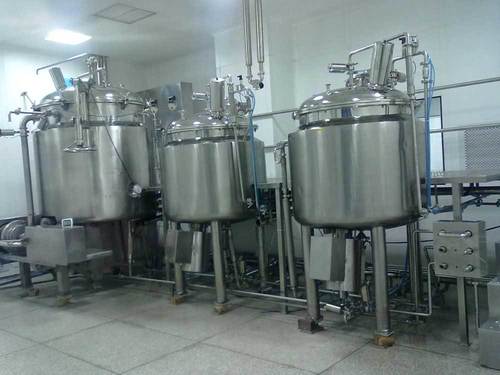
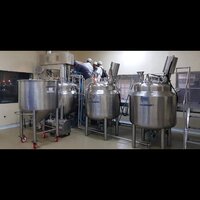
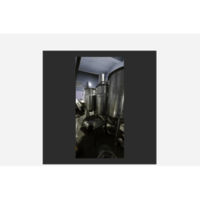




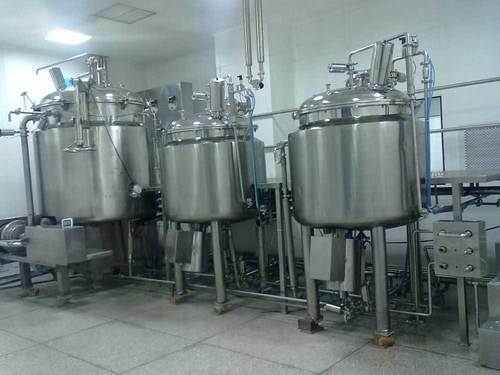
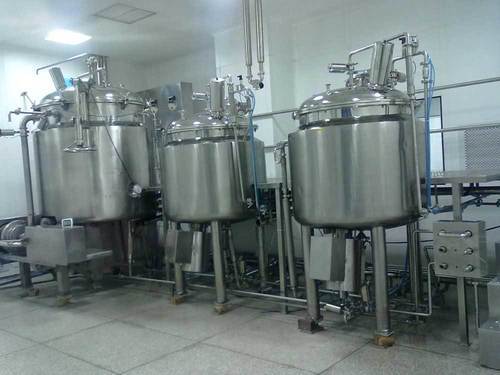
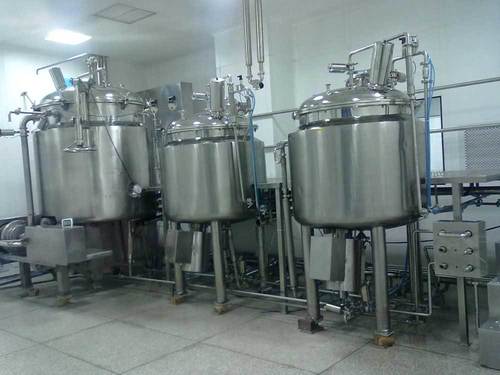

 Call Me Free
Call Me Free
